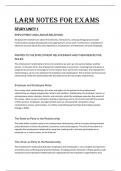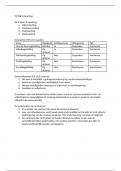Summary
Summary Exam scope with all the notes
- Course
- Labour Relations (LARM311)
- Institution
- North-West University (NWU)
This document contains the June exam scope as well as all the important notes. It’s summarised from the textbook and contains everything you need to know for the exam as well as tests
[Show more]




